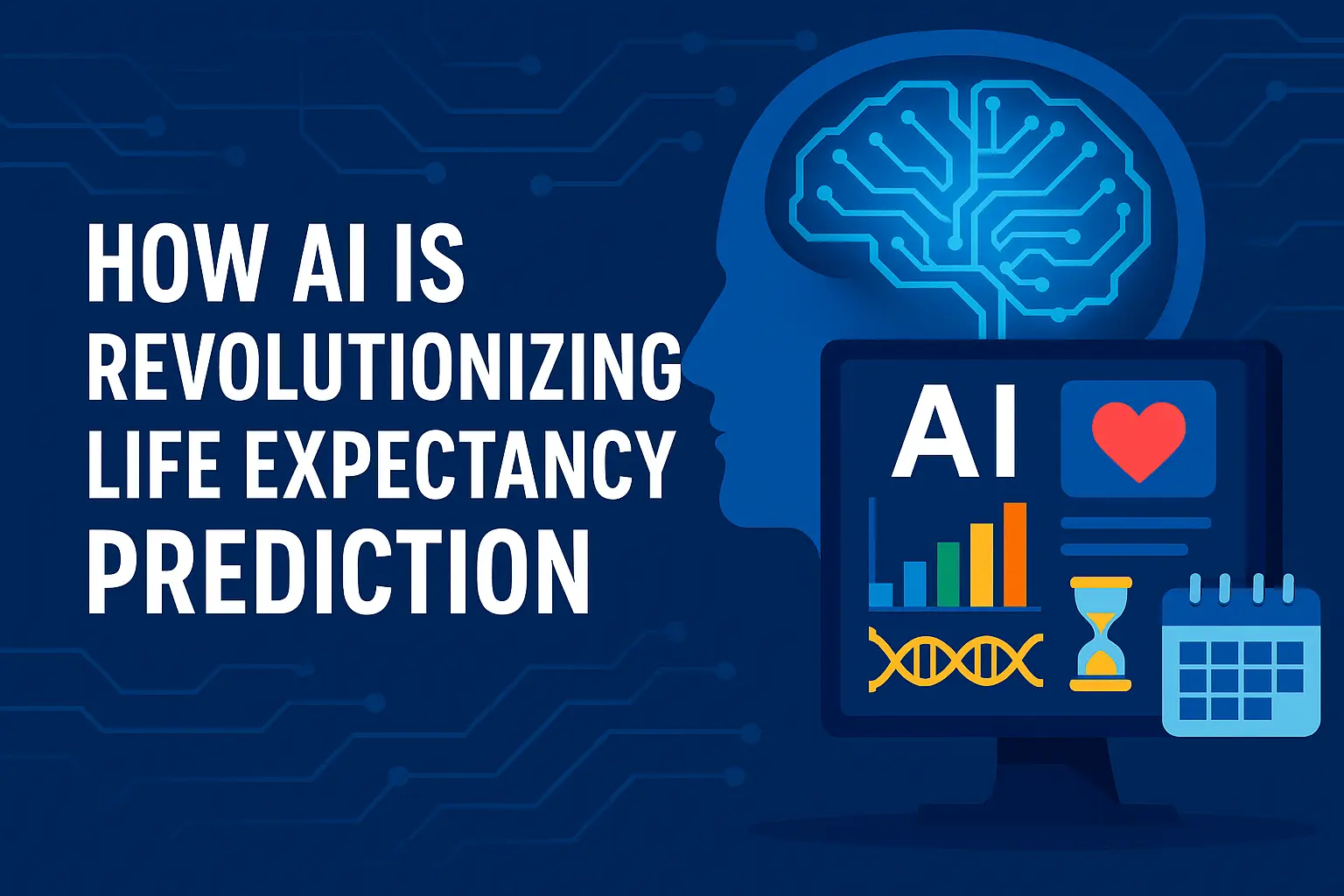How AI Revolutionizing Life Expectancy Prediction

In the age of artificial intelligence (AI revolution), predicting life expectancy has moved beyond traditional statistics. With AI-driven tools and intelligent data analysis, it’s now possible to forecast lifespan with increasing precision. This transformative shift is reshaping the future of healthcare, risk management, and personal wellness.
What is AI Life Expectancy Prediction?
AI life expectancy prediction refers to the use of machine learning and data analytics to estimate how long a person may live. Unlike outdated models that rely solely on age and gender, AI health prediction tools consider a vast range of inputs—medical history, genetics, lifestyle habits, and even environmental data—to deliver accurate and dynamic life expectancy forecasts.
These AI mortality models are the foundation of today’s most advanced AI death calculators and lifespan prediction tools.
How AI Predicts Your Lifespan?
To predict your lifespan with AI, algorithms process large datasets and recognize hidden patterns. These include:
- Medical records (chronic illnesses, past surgeries)
- Lifestyle data (exercise, diet, sleep patterns)
- Behavioral insights (stress levels, alcohol/smoking habits)
- Genetic information (hereditary conditions)
Through machine learning, these AI life prediction models can deliver personalized results and continually refine their accuracy over time.
Benefits of AI-Based Life Expectancy Calculators
The shift to AI-driven life expectancy tools brings multiple advantages:
- Improved accuracy over manual health assessments
- Early detection of life-threatening risks
- Personalized health plans tailored to an individual’s risk profile
- Real-time predictions using updated health and wearable data
These tools empower users to make informed lifestyle changes and give healthcare providers actionable insights into patient mortality risk.
Real-World Applications of AI Mortality Models
Across industries, AI mortality prediction is already in use:
- Healthcare systems use predictive models to monitor high-risk patients.
- Insurance companies apply life expectancy calculators to assess policy risk.
- Public health researchers use AI to understand mortality trends across populations.
From improving longevity to enhancing quality of life, the impact is widespread.
Challenges and Ethical Considerations
Despite their benefits, AI death prediction tools come with limitations:
- Data privacy is a major concern with sensitive health information.
- Bias in algorithms may lead to inaccurate predictions for certain demographics.
- Emotional effects on users being told their potential death age.
- Over-dependence on AI may sideline human medical judgment.
Balancing AI innovation with ethical frameworks is essential.
The Future of AI Revolution in Lifespan Prediction
Looking ahead, AI life expectancy tools will integrate with:
- Wearable health devices for real-time tracking
- Digital twin models to simulate health outcomes
- Personalized medicine platforms for tailored treatments
As AI evolves, so will the accuracy and scope of life prediction models—shaping how we understand and extend human life.
Conclusion
AI is undeniably revolutionizing life expectancy prediction. With advanced mortality models, real-time analytics, and personalized health insights, artificial intelligence is changing how we measure, manage, and potentially extend our lives. While challenges remain, the future of AI in this space is both promising and impactful.
